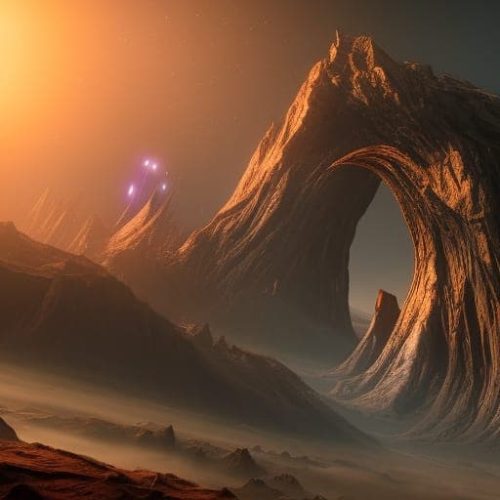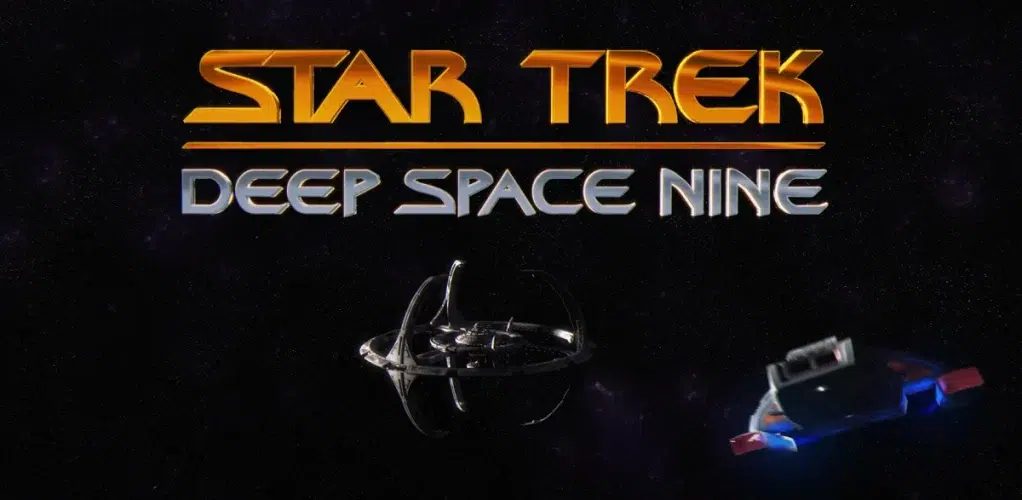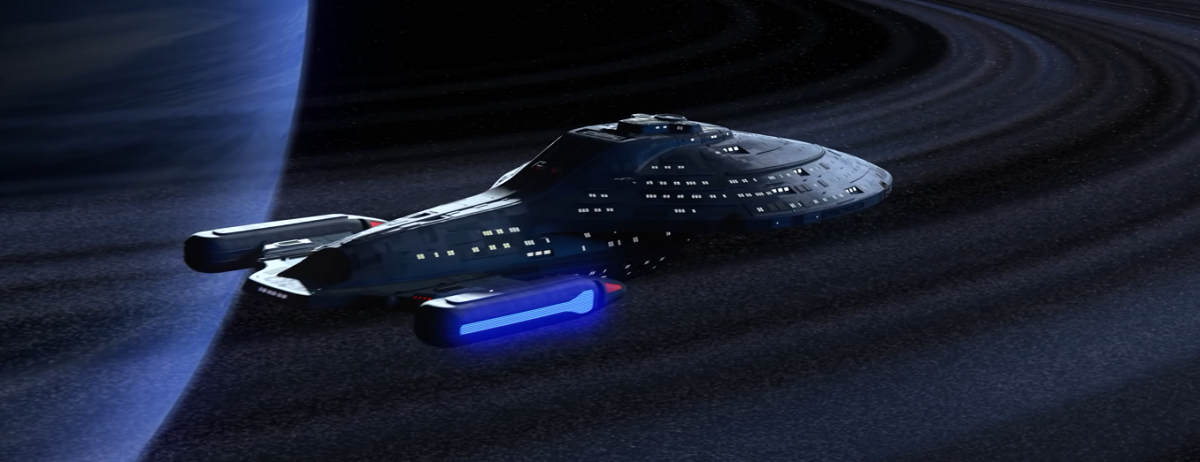When watching the TV show Star Trek, it’s hard to imagine where it takes place. There are so many fantastic places within the show that don’t seem real. Which begs the question of where exactly is the Star Trek universe based?
Star Trek is based mostly in the Milky Way galaxy. The star system is divided into four different quadrants, which are Alpha, Beta, Gamma, and Delta. The characters from earth are generally have a limits on how far and how fast they can travel, compared to some of the other alien species or entities.
Let’s take a closer look at the Milky Way galaxy through a Star Trek lens.
What Is the Milky Way?
The Milky Way is the galaxy in which our planet is located. It’s only one of the billions of galaxies in the known universe.
The Milky Way is shaped like a barred disk. In space, this is known as a spiral galaxy. It has four main arms that spiral around a large center. Our Sun, Earth, and the rest of our solar system are actually located on a spur resting between two major arms. This spur is known as the Orion Arm.

Star Trek is based almost completely in the Milky Way galaxy, and this is due to their limited technology. It was once believed that the galaxy measured 100,000 light-years across. However, new studies have shown that it’s actually 200,000 light-years across.
In order to travel just one light-year, it would take you about 20,000 years. This is because one light-year is 6 trillion miles. The Enterprise is capable of traveling many light-years at a time.
Quadrants, Sectors, and Barriers Are Important for Navigation
In real life space, major areas of a galaxy are divided into four galactic quadrants. Even though the galaxy is a 3-dimensional space, it can be viewed in a 2-dimensional way, similar to a flat map.
Once the galaxy has this 2-dimensional map, it’s oriented with the faces of a clock. The top of the map will show 12 o’clock, and a median line with travel from that degree down to the bottom of the galaxy, which is labeled 6 o’clock. From there, a second median will go from the 3 o’clock position, straight across to 9 o’clock.

In real life, these medians intersect in the center of the Sun, with the quadrants covering different space areas from that point. In Star Trek, the medians actually intersect in the middle of the Milky Way, which is called the galactic center.
These quadrants in Star Trek are named Alpha, Beta, Gamma, and Delta. At the beginning of the Star Trek universe’s creation, the term quadrant was used inconsistently. Oftentimes the word was used to describe smaller sections of the galaxy as well as the larger four mentioned above.
As the show’s popularity grew and the universe expanded beyond just the original Star Trek, the way the galaxy was divided up was solidified. The four quadrants of the Milky Way became more consistently referred to. However, it can still be confusing, no matter how developed the show has become.
Barriers
Two barriers in the Star Trek universe need to be mentioned. The first is the galactic barrier. This is a field of negative energy that disrupts machines that travel through. It can also mess with human and alien bodies. It encompasses the entire Milky Way like a dome.
Another barrier in the Milky Way is the great barrier. This is a barrier in the Star Trek universe that is located around the galactic center. It surrounds the center of the Milky Way and then reaches up to touch the top and bottom of the galactic barrier.
Check out this video below for a more in-depth explanation of the Star Trek Galactic Barriers:
Alpha
This Alpha quadrant is found between the 6 and 9 o’clock positions of the galactic plane. This quadrant (as well as Beta) is the main stage for the TV shows Star Trek: The Original Series, Star Trek: The Next Generation, Star Trek: Deep Space Nine, and Star Trek: Enterprise.
Now, Earth is located in the Alpha quadrant. Alpha is where the majority of the United Federation of Planets is located. It also holds a wormhole that leads to the Gamma quadrant (more on that later). The planet Vulcan, which is home to the famous character of Spock, is located in this quadrant.
There was speculation about where exactly Earth is within the Alpha quadrant. There are some instances when it appears on onscreen maps as being right on the Alpha and Beta quadrants’ border. However, recent adaptations of the franchise have determined that our solar system is within the Alpha quadrant, close to Beta’s border.
Beta
Beta is located between the 3 and 6 o’clock positions of the galactic plane. As mentioned above, many of the TV show and movie adaptations of the franchise occur within this quadrant.
The Beta quadrant is also home to many familiar alien species within the Star Trek universe. The most notable species that are located within the Beta quadrant are the Klingons and Romulans. However, in Star Trek: Deep Space Nine, it doesn’t place the Klingons and Romulans within the Beta quadrant.
In fact, this TV show adaptation places both species within the Alpha quadrant. In an interview, Ricard D. Moore said that this is because the audience believed Klingons and Romulans lived in Alpha with the rest of the Federation. The team working on Deep Space Nine felt it was important to keep it that way.
Gamma
Gamma is situated between the 9 and 12 o’clock positions of the galactic plane. Most of what we know of the Gamma quadrant is learned from the TV adaptation of Star Trek: Deep Space Nine.
In addition to being the home of Changelings and the Dominion, the Gamma quadrant is where the Bajoran wormhole. It’s this wormhole that allowed the crew in DSN to be transported to the Gamma quadrant.

This sent them 70 thousand light-years away from the Alpha quadrant. This is on the complete opposite side of the galaxy. The Federation decided to move the Deep Space 9 space station there, rather than its previous location in orbit around Bajor. It was a strategic move.
Delta
The Delta quadrant is located between 12 and 3 o’clock positions. This area of space is hardly explored. In fact, there wasn’t much known about this region of the Milky Way until Star Trek: Voyager.

It was the main stage for the TV adaptation, so any quadrant knowledge was mapped out by their journey through. However, when they returned to Earth, that information was given to the Federation.
The biggest known threat in the Delta quadrant was the Borg. The collective mind robotic enemy that was a force to be reckoned with made the Delta quadrant their home until the Federation finally wiped them out.
Sectors
While there are quadrants for large and small areas of space, there are also sectors. These sectors are used to measure smaller areas, and each quadrant can have thousands of them. Sectors are a gridded area of space that can be determined by a certain number of light-years.
Summary
It’s fascinating how expansive the Star Trek universe is and how the TV show’s creators made each new world in-depth. We have no real way of knowing how accurate they are, but it would be something if those Vulcans and Klingons were out there in our star system somewhere. Hopefully, this article was helpful in mapping how Star Trek is based in the Milky Way.
Sources
- Galaxy Map: Basic plan of the Milky Way
- Wikipedia: Galactic quadrant
- Star Trek Dimension: The division of the Star Trek Galaxy
- Science Fiction & Fantasy Stack Exchange: How big is the known Star Trek universe?
- Science Fiction & Fantasy Stack Exchange: Can anyone explain the Star Trek astrography (i.e. quadrants)?
- National Geographic: Star Trek is Right About Almost Everything
- Space: Milky Way Galaxy: Facts About Our Galactic Home
- Live Science: How Long Would It Take to Cross the Milky Way at Light Speed?
- YouTube: Galactic Barriers (Star Trek)
- Star Trek: Alpha Quadrant
- Star Trek Online: Milky Way
- Star Trek: ONE TREK MIND: The Galactic Barrier
- Fandom: Milky Way Galaxy
- Fandom: Galactic barrier
- NASA: Space Place: What Is a Light-Year?
- Wikipedia: Light-year
- Starbase118: Galactic Barrier
- Fandom: Galactic quadrant
- Wikipedia: Star Trek: The Original Series
- Wikipedia: Star_Trek:_The_Next_Generation
- Wikipedia: Star_Trek:_Deep_Space_Nine
- Wikipedia: Star_Trek:_Enterprise
- Wikipedia: Spock
- Wikipedia: Klingon
- Wikipedia: Vulcan_(Star_Trek)#Homeworld
- Wikipedia: Star_Trek
- Wikipedia: Milky_Way
- Wikipedia: Starship_Enterprise
- Wikipedia: Orion_Arm
- Star Trek: Delta Quadrant
- Star Trek: Gamma Quadrant
- Fandom: Vulcan (planet)
- Wikipedia: Ronald_D._Moore
- Way Back Machine: Ronald D Moore Interview
- Wikipedia: Beta_Quadrant
- Fandom: Quadrant
- Wikipedia: Bajoran wormhole
- Fandom: Alpha_Quadrant
- Fandom: Gamma_Quadrant
- Wikipedia: Bajor
- Wikipedia: Borg
- Fandom: Galactic quadrant
- Fandom: Delta Quadrant
- Star Trek: Delta Quadrant
- Star Trek Online: Sector space
- Fandom: Sector






Leave a comment
You must be logged in to post a comment.